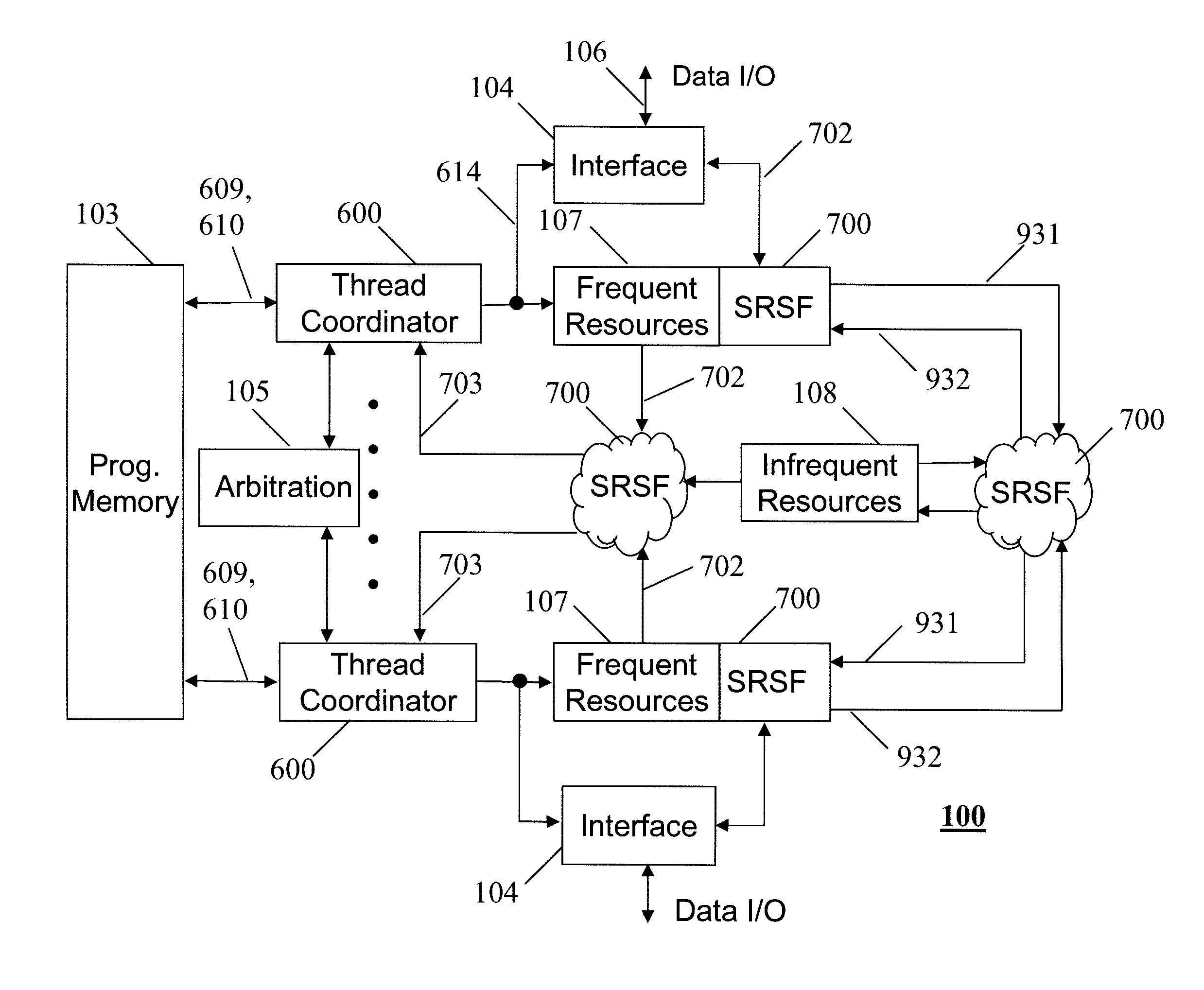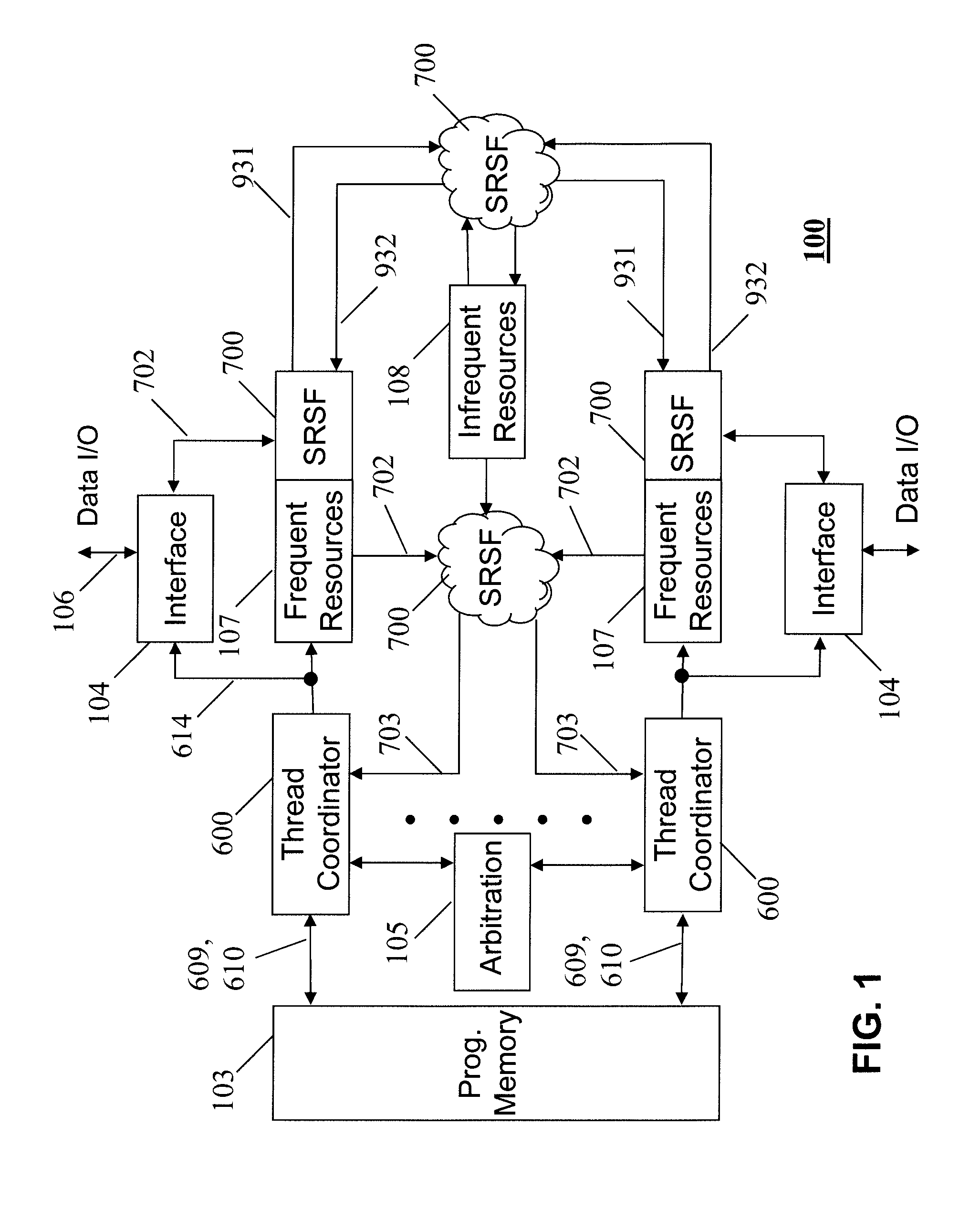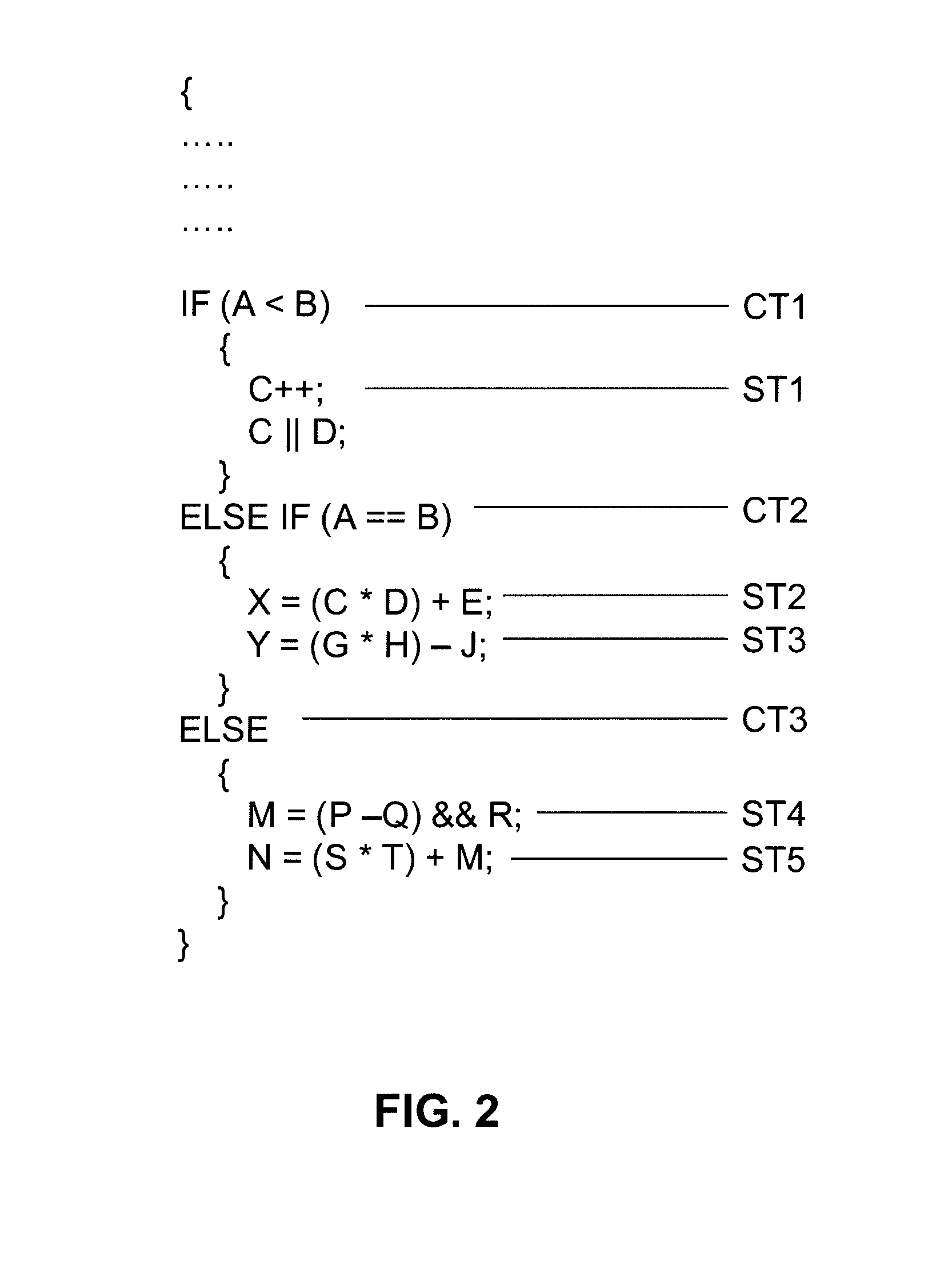Multithreaded processor array with heterogeneous function blocks communicating tokens via self-routing switch fabrics
a processor array and function block technology, applied in the field of hardware array processors, can solve the problems of inefficient parallelism, many microprocessor resources may be underutilized, and further consume processing time and power, and the microprocessor and hence the related software approach to parallelism tend to be much slower and inefficien
- Summary
- Abstract
- Description
- Claims
- Application Information
AI Technical Summary
Benefits of technology
Problems solved by technology
Method used
Image
Examples
Embodiment Construction
[0049]FIG. 2 shows an example of some pseudo code used to implement several conditional threads. The pseudo code is not associated with any particular algorithm and is shown to help assist in the explanation of the operation of the present invention. It can be seen from FIG. 2 that the if-else loop implements three conditional threads, shown as CT1, CT2 and CT3. The execution of a particular conditional thread is based upon the comparison of the parameters A and B. Within each conditional thread there are several sub-threads labelled ST1 to ST5. Sub-thread ST1 is a sequential thread and hence each subsequent operation is dependent on the result of the previous operation. Sub-threads ST2 and ST3 are initiated if CT2 is true and are independent parallel threads. Sub-thread ST4 and ST5 are initiated if CT3 is true. Though sub-thread ST4 can progress at its own rate, sub-thread ST5 is dependent on the result of ST4 (the parameter M) and so cannot complete until ST4 is complete.
[0050]FIG...
PUM
 Login to View More
Login to View More Abstract
Description
Claims
Application Information
 Login to View More
Login to View More - R&D
- Intellectual Property
- Life Sciences
- Materials
- Tech Scout
- Unparalleled Data Quality
- Higher Quality Content
- 60% Fewer Hallucinations
Browse by: Latest US Patents, China's latest patents, Technical Efficacy Thesaurus, Application Domain, Technology Topic, Popular Technical Reports.
© 2025 PatSnap. All rights reserved.Legal|Privacy policy|Modern Slavery Act Transparency Statement|Sitemap|About US| Contact US: help@patsnap.com



